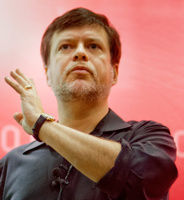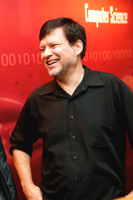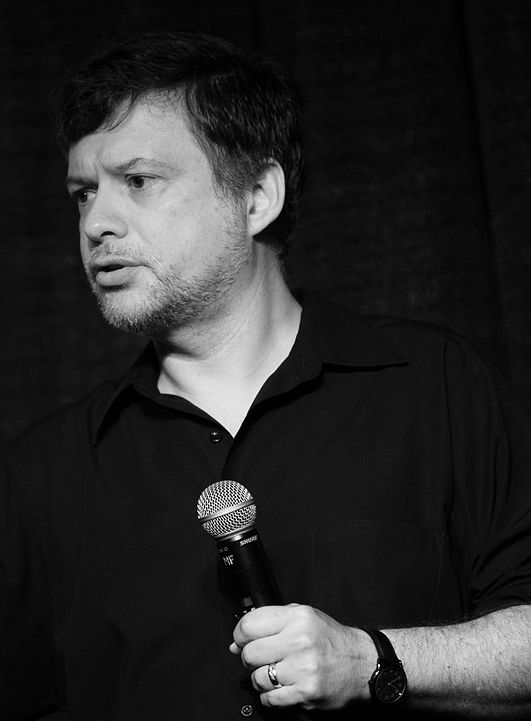Toolshed Technologies
Andy Hunt
Author, Programmer, Musician
A Crayon for the Mind
—Andy Hunt
08/01/1998
Published in Toolshed Newsletters
In a 1994 article from the New York Times ([HOLLAND) music reviewer Bernard Holland noticed an odd thing. He had gone out and purchased a brand-spanking new compact disc of a favorite album, one that he had owned for 40 years on a vinyl record.
The new CD sounded brilliant, crisp and clear—just as he had remembered the record. So he went down to the basement and found the 40 year old record.
It sounded awful. Not at all as he remembered it. It was muffled, tinny, muddy, you name it.
The title of the article is “The LP: A Crayon For the Mind”, and Mr. Holland goes on to speculate that it is the mind of the listener that had filled in all the details missing from the original record. Filled in exactly what was needed–no more and no less, as evidenced by the correlation between the mentally revised record with the pristine perfection of the compact disc.
Marshall McLuhan, in the 1964 book “Understanding Media” (the “Medium is the Message” book) [MCLUHAN] spoke of “hot” and “cool” media. Contrary to what you would expect that to mean, both television and the CD are classified as “hot” media. The listener/viewer isn’t involved. You are force fed content at a very high bit-rate without any imagination or effort on your part. The media gives. You take. That is all.
By contrast, books, and probably the net are considered “cool” media. They require some level of audience participation.
This differentiation is why Mr. Holland called the LP “the crayon for the mind”. Since most of the details were muffled or inaudible, the mind had to actively “color in” what was missing—and did so correctly.
A Cool Design
The goal of a good object-oriented design is to be a “cool” design—that is, one that requires the engagement of the reader in order to make sense.
Too many designers and methodologies seem to push the notion of over-specifying a design. Provide too many details and the design becomes “hot”. Think really hot. Think meltdown.
The more explicit the design is, the less freedom you (or anyone else) have to implement it. The code becomes a brittle slave to the design; inflexible, and software rot can start to set in.
But on the other hand, you can’t leave important details out of the design, lest different implementors implement them differently! Or just plain wrongly.
So how do you create a design specification that works like the LP? Implicit in that it is lacking important details, but structured enough so that every reader fills in the details the same way?
Philosophies
The correct balance between explicitness and implicitness is the trick. I can’t pretend to say “here is a formula” that will always work, because it won’t. A lot depends on your experience, the nature of the system being constructed, and the environment (both technical and political) that you are working in.
But there is one method that seems to work well that I can share with you.
The idea is design with philosophies, which I use here to mean a very high level abstraction. A philosophy in this context is a statement by the designer of how a thing should behave. Think of a CRC card (Class-Responsibility-Collaborators), but without the the class or collaborators. That is, think of a responsibility that one or many classes may have in the system. Codify a philosophy of dealing with it. This could be something as simple as “whoever allocates a resource will de-allocate it”, “whoever starts a transaction will end it”, or as implicitly complex as “data gathered from any source for any purpose will be posted to the blackboard”. But it is a guiding philosophy, one that transcends any particular class, or implementation.
Guidelines like these can be relied on by developers to also be true – system invariants, if you will. Given this overall structure, a developer can “fill in” the details and be sure of fulfilling the overall contracts of the system.
And it can turn out just as perfect as the CD – and just as satisfying as vinyl.
References
- [HOLLAND] Holland, B. “The LP: A Crayon for the Mind,” New York Times, Sunday July 24, 1994, page 30.
- [MCLUHAN] McLuhan, M. “Understanding Media, The Extensions of Man,” MIT Press, 1964.
Copyright © 1998,1999 Toolshed Technologies, Inc.
All Rights Reserved
Keep up to date with my low-volume newsletter and don't miss another article or fresh idea:
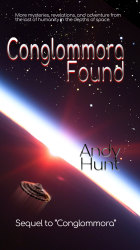

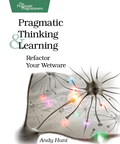
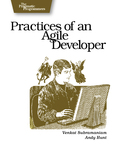
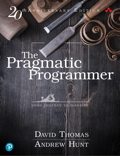
Latest News
-
New article: The Limits of Process
January 25, 2022 -
New article: Habits vs. Practices
January 5, 2022 -
New novel: Weatherly Hall
August 10, 2021 - List All News...

